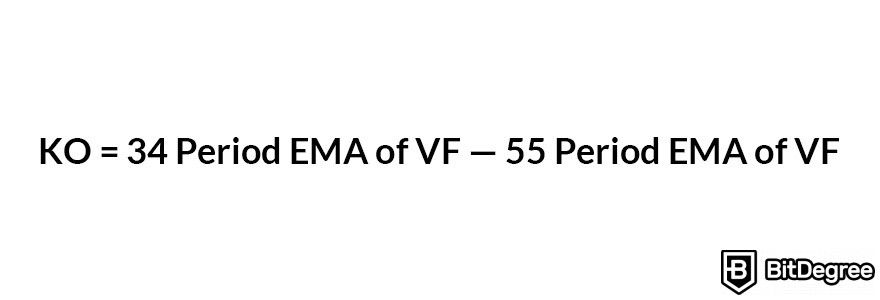What is Klinger Oscillator?
Free Airdrop Season 7 is LIVE! Answer fun questions or do simple tasks to earn rewards from the $30K BitDegree prize pool. Participate Now ! 🔥
Let's find out Klinger Oscillator meaning, definition in crypto, what is Klinger Oscillator, and all other detailed facts.
The Klinger oscillator is a volume-based technical indicator used to determine long-term trends of money flow in the market and identify any short-term variations. It was created by Stephen Klinger in 1977.
This oscillator can be used to forecast price reversals by taking volume and price data for detailed comparison. Volume refers to the number of units of an asset that are traded per unit of time.
The indicator consists of two lines representing the key-value observing (KVO) and the exponential moving average (EMA). The EMA is used to determine the 13-period moving average and is the key indicator of whether to buy and sell. The indicator shows how the volume movement through an asset affects the price levels both long and short-term.
The key principle of the Klinger oscillator is to observe the crossover points between the two lines.
The Klinger oscillator helps identify the signals for buying and selling via the 13-period moving average line. In this regard, it acts similar to the MACD indicator. If the Klinger oscillator goes above the signal line, traders may switch to a bullish position. If the oscillator goes below the signal line, it points towards more bearish attitudes.
The lines on the Klinger oscillator do not have any specified values attached to them. Traders can pick an indicator time frame and adjust it for the desired trading period.
The Klinger volume indicator formula is quite complex compared to other technical indicators. However, it’s not expected of traders to fully understand the formula itself, only its use.
The oscillator is calculated when you deduct the 34-period exponential moving average of the volume force from the 55-period exponential moving average of the volume force during the first stage.

KO = Klinger Oscillator
VF = Volume Force
Volume Force = V × [2 × ((dm / cm) − 1)] × T × 100
V = Volume
T = Trend
Trend = +1 if (H + L + C) > (H - 1 + L - 1 + Cv - 1)
Trend = − 1 if Above is < or =
H = High
L = Low
C = Close
dm = H − L
cm = cm - 1 + dm if Trend = Trend -1
cm = dm - 1 + dm if Trend ≠ Trend -1
Traders that use the Klinger oscillator are able to initiate a new counter position in the market as soon as the initial one has closed. Thus, these traders are always in the market as the opening and closing signals appear the same.
The Klinger oscillator is a short-term trading strategy used primarily on charts with a lower time frame. Traders who remain in the market for an extended period of time gather large volumes which can result in many gains and losses. The end goal of the Klinger oscillator is the have as good a win-to-loss ratio as possible when all the positions are closed.









